SPAR stands for “sport, physical activity and recreation”. This includes things like team sports, athletics, walking and movement, and gardening, as well as venues like parks, community centres, and pools.
FREQUENTLY ASKED QUESTIONS
What is the goal of the Measuring Impact of SPAR initiative?
Decision makers need research and evidence to make sound proposals when preparing, evaluating, and debating policies, programs and other services. This initiative aims to quantify the impacts that SPAR investments can have on the social, health, economic and environmental wellbeing of Canadians and their communities. Decision makers at all levels of government can see evidence of significant positive returns through strategic SPAR investment.
Why is this research important and how should it be used?
Until now, economic assessments on the impact of SPAR in Canada, have been limited, dated or disparate, and very little research in Canada has endeavoured to summarize the economic impact of SPAR. Decision makers and sector audiences can use the research to inform policy and program development, budget allocation, and strategic planning. Evidence shows SPAR’s vital role in enhancing public health, climate resilience, urban development, and community building.
Who is leading the Measuring Impact of SPAR initiative?
The Canadian Fitness and Lifestyle Research Institute (CFLRI) and the Canadian Parks and Recreation Association (CPRA) have partnered to champion the Measuring Impact of SPAR initiative to provide innovative new research, tools and resources that demonstrate the multifaceted impact and value of the SPAR sector. CFLRI and CPRA enlisted the support of Raymond Chabot Grant Thornton for to help with the analyses. We thank Parks Canada, the Sport, Physical Activity and Recreation Council (SPARC), and the Canadian Training Network for Parks and Recreation (CTNPR) for funding this initiative which would not have been possible without their support. We also acknowledge and thank the Expert Committee and the Knowledge Mobilization Committee for providing us with their time, guidance and expertise.
Who are CFLRI and CPRA?
CFLRI was established in 1980. It is the leading national research organization dedicated specifically to research and surveillance on physical activity, sport, and recreation. The fundamental objective of the CFLRI is to provide credible data for policy- and decision-makers, practitioners and researchers through knowledge creation, translation, and exchange to inform and affect evidence-based policy and practice across Canada.
CPRA champions the essential role that parks and recreational activities play in fostering healthy, vibrant and resilient communities across Canada. CPRA is dedicated to promoting the benefits of recreational spaces and programs, advocating for sustainable practices, and providing leadership in public policy development. Their efforts are centered on promoting physical and mental wellbeing through accessible, diverse, and well-maintained parks and recreation facilities.
How accurate are the findings in the report regarding the impact of SPAR?
Some findings are based on best estimations. There are acknowledged gaps in the research, especially concerning the health and environmental impacts of SPAR. Given this, results are likely to be underestimates, and more research is needed for a fuller understanding. However, the research provides an important emerging picture on the powerful return on investment opportunities in the SPAR sector. An independent contractor, Raymond Chabot Grant Thornton, was engaged to assist with the economic indicators, impact analysis and calculation of monetary equivalents presented in the report. The data used in this report represents a snapshot in time and reflected the most recent numbers available at the time of writing. Data from various sources, however, are constantly being updated which may account for discrepancies.
Why have sport, physical activity and recreation been grouped?
SPAR activities are inextricably linked. They are grouped in order to see a holistic view of the contribution SPAR makes to Canadian society. Measuring the impact of sport, physical activity and recreation together, also aligns with how the sector and governments plan, discuss and report on SPAR-related activities. For example, in February 2023, Federal and Provincial/Territorial ministers of sport, physical activity and recreation held a two-day meeting focused on advancing governments’ collective SPAR priorities.
Can the total amounts for the social, health, economic and environmental impacts of SPAR be added together?
No, the total amounts for social, health, economic, and environmental impacts of SPAR cannot be combined, as they represent different constructs and concepts like cost, benefits, and value. Each factor must be examined on its own.
Will this research initiative continue?
Yes. Efforts to access and analyze data to further mitigate data gaps and underestimates are ongoing. Sustained funding and support from the public and private sector are essential for the research to continue to be refined. This also includes the development of easy-to-use tools for planners and policymakers that can be customized at the local level.
How can governments best maximize returns through SPAR investments?
A coordinated effort amongst all three levels of government and the private sector is needed to develop a long-term, evidence-based investment strategy that maximizes the positive impacts of SPAR. Governments can strategically allocate funds to initiatives that promote physical activity, support community infrastructure, and integrate SPAR into public health, urban planning, and environmental policies to leverage its multifaceted benefits for Canadians.
How much does SPAR contribute to the Canadian economy?
SPAR contributes an estimated $37.2 billion annually to Canada’s GDP, reflecting its significant role in economic development and individual well-being. This value is considered an underestimate as it does not include certain contributors like athletic clothing and other items.
Is the SPAR sector profitable?
Retail sales of SPAR products reached $23.3 billion in 2022, a 7% increase from the previous year, contributing $21.5 billion to gross domestic product (GDP). In 2021, the “other amusement and recreation” sector reported a 7.7% profit margin, a 4.8% increase from the previous year, demonstrating resilience and growth, and a good investment.
What is the social impact of SPAR?
Social benefits include improved community cohesion and enhanced volunteerism. Volunteering is essential for the survival and prosperity of the sector and has a profound social impact. In 2020, Canadians contributed the financial equivalent of $13.6 billion of volunteer work to society through SPAR.
How does SPAR in enhance communities?
SPAR programs are vital for social cohesion, improving physical and mental health, stimulating local economic growth, and contributing to environmental sustainability. Participation in SPAR also promotes inclusivity, the perception of safer communities, and builds healthier, more resilient communities.
How does SPAR contribute to Canadians' health?
When considering the health impact of SPAR, it is the nation’s health care costs that are reflected in this report. The health care costs generated by physical inactivity have been estimated at $3.9 billion on an average annual basis. This value reflects the annual contribution of direct and indirect health care costs associated with premature mortality for select health conditions related to physical inactivity (i.e., cardiovascular disease, stroke, type 2 diabetes, hypertension, breast cancer, colon cancer, osteoporosis, and depression). The potential for health care savings was also evaluated through estimating the impact that a 10-percentage point reduction in physical inactivity levels would have. This calculation showed that if the population decreased physical inactivity levels by 10-percentage points, the health care system could save a conservative $629 million per year in terms of the treatment, maintenance, or lives saved due to these conditions.
What is the environmental impact of SPAR?
SPAR can help build climate-resilient communities, aligning with national and global goals to combat the effects of climate change, and conversely, the built environment also impacts SPAR participation. The 2019 Canadian Infrastructure Report Card indicates that between 30% and 35% of recreation facilities are in fair, poor or very poor condition, and in some categories, more than 60% are at least 20 years old. To replace this aging infrastructure, the cost was estimated at $42.5 billion in 2020. In terms of benefits, these improvements can provide more inviting, welcoming and safe environments for individuals to increase participation in SPAR activities. This underscores the essential role the physical and built environment plays in promoting health and reducing pollution, while highlighting the significant benefits that could be derived from maintaining and upgrading aging community infrastructure amid a growing climate crisis.
What level of investment has been made in SPAR infrastructure?
In 2022, governments invested $2 billion in community infrastructure, with $1.5 billion coming from the municipal level. It is important to note that some of the municipal investment could be from federal or provincial/territorial funding (e.g., through grants and contributions). This figure is almost certainly an underestimate given the different programs at all three levels of government. However, municipal governments are significant contributors to SPAR sector investment, despite the resulting benefits extending to provincial and federal levels.
Are Canadians satisfied with current levels of government investment in SPAR?
Research indicates that 61% of Canadians support increased government funding for SPAR despite existing investments. Current investment levels are not keeping pace with the need to address aging infrastructure.
How can I help?
To support this initiative, you can share your data and research related to SPAR. We are continually reviewing additional information that could potentially add to the comprehensiveness of our analysis. If you have research to share, please contact us.
How can I stay informed about this initiative?
To receive updates, including announcements of new data, tools and resources, please sign up below.
How can I get in touch with the project team?
If you have research to share or questions about the initiative, please contact us.


